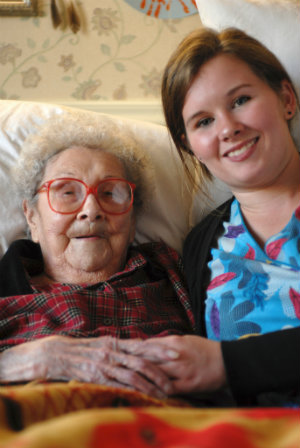 Whether we receive care, provide care, or coordinate care for a loved one, everyone benefits from improving the quality of jobs for America’s 2 million current home care workers and the millions more we’ll need to care for the growing number of older adults in the coming decades.
Whether we receive care, provide care, or coordinate care for a loved one, everyone benefits from improving the quality of jobs for America’s 2 million current home care workers and the millions more we’ll need to care for the growing number of older adults in the coming decades.
That’s why the recent ruling by the U.S. Court of Appeals for the D.C. Circuit affirming the extension of federal labor protections to home care workers is an important victory not only for fairness, but for improving the quality of care for older adults and people living with disabilities.
The decision, handed down on Aug. 21, arrives as care needs for the country’s aging generation are expanding rapidly. PHI, the nation's leading authority on the direct-care workforce, estimates that the demand for home care workers will increase 50 percent by 2022.
Despite the growth of the industry, the wages of home care aides have declined over the past decade to an average of $9.78 per hour, and finding skilled, committed workers for caregiving jobs is becoming increasingly difficult. Federal wage and hour protections will help to provide a more solid wage floor for one of our nation’s fastest-growing occupations.
Today, the home care industry is composed of nearly 100,000 businesses providing care and support to elders and people living with disabilities—more than 30,000 home health care agencies and more than 67,000 nonmedical agencies delivering personal care services.
 PHI applauds the court’s Aug. 21 decision that affirmed the U.S. Department of Labor’s (DOL) final Home Care Rule, which makes clear that DOL has the authority to exclude third-party employers from claiming the “companionship” exemption to the Fair Labor Standards Act (FLSA). The court also affirmed that DOL has the authority to redefine the companionship exemption.
PHI applauds the court’s Aug. 21 decision that affirmed the U.S. Department of Labor’s (DOL) final Home Care Rule, which makes clear that DOL has the authority to exclude third-party employers from claiming the “companionship” exemption to the Fair Labor Standards Act (FLSA). The court also affirmed that DOL has the authority to redefine the companionship exemption.
That authority had been challenged in Home Care Association of America v. Weil, the lawsuit brought by several home care trade associations and the International Franchise Association. In separate decisions in late December 2014 and early January 2015, Federal District Court Judge Richard Leon ruled in favor of the industry and vacated the DOL’s final Home Care Rule, which extended federal labor protections to the vast majority of home care workers.
The new definition of the companionship exemption, affirmed by the appeals court, responds to significant changes in the home care industry since the law was amended more than four decades ago.
We need a multi-faceted national response to transforming long-term services and supports that acknowledges the crucial role of direct-care workers in creating a more equitable and reliable system of care.
Along with the John A. Hartford Foundation, PHI’s longtime funder and partner, and our valued colleagues in the Eldercare Workforce Alliance, we believe that improving the quality of jobs for America’s home care aides is essential to improving the quality of care for older adults. Home care is challenging work, and has long been undervalued. As the number of people wanting long-term services and supports in their homes continues to climb, we need a multi-faceted national response to transforming long-term services and supports that acknowledges the crucial role of direct-care workers in creating a more equitable and reliable system of care.
We hope that the home care industry will cease its efforts to block the Home Care Rule and instead work with all stakeholders to ensure swift implementation of the rule without disruption of services to consumers.
Following the appeals court decision, it is time for state Medicaid programs to move forward with implementation. Further delays will only contribute to increased difficulties in recruiting and retaining workers to meet rising demand.
Home health aides and personal care aides—the two home care occupations tracked by the Bureau of Labor Statistics—will create more than one million new jobs over the decade 2012–22, more than any other occupational grouping.
By setting a wage floor and legitimizing the work of millions of women who provide home care services, the new DOL rule is a first step toward strengthening and stabilizing this crucial workforce.
PHI has extensive resources on the home care workforce:
- For more information on the history of the companionship exemption, the U.S. DOL final Home Care Rule, and Home Care Association of America v. Weil, visit www.phinational.org/fairpay
- To learn more about the for-profit home care industry, see PHI’s latest fact sheet,
- National and state data on the growth of the home care workforce, wages and benefits, and training requirements can be found at the PHI State Data Center,
